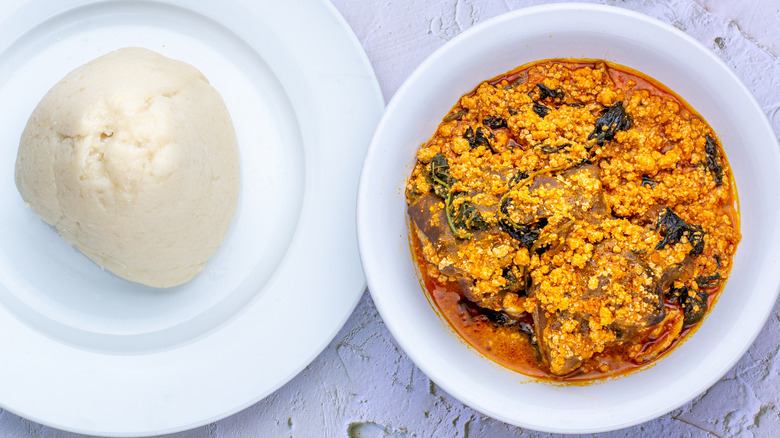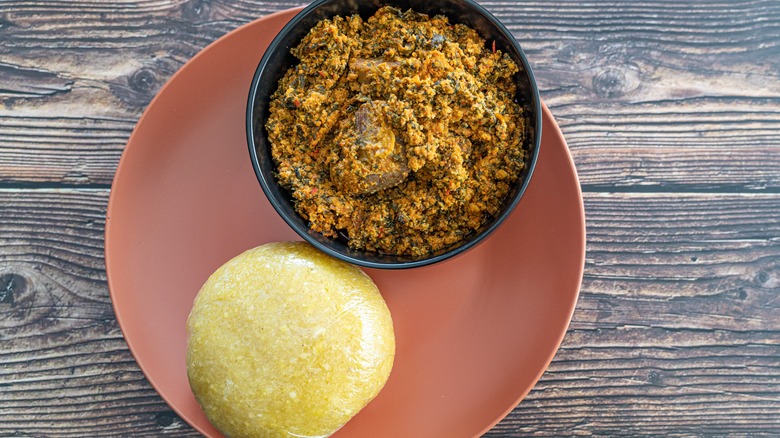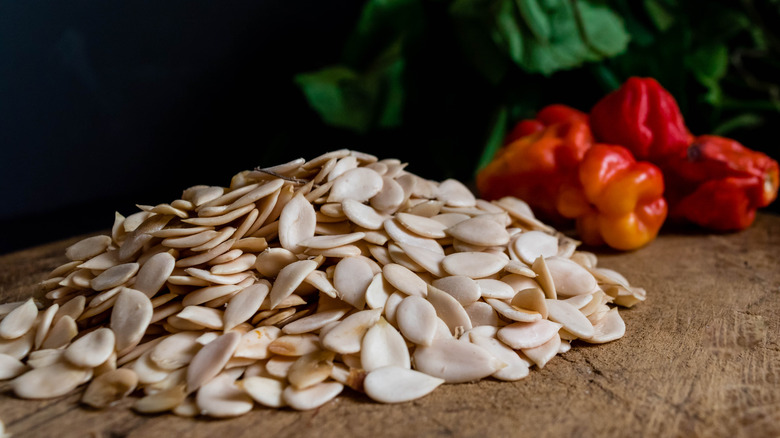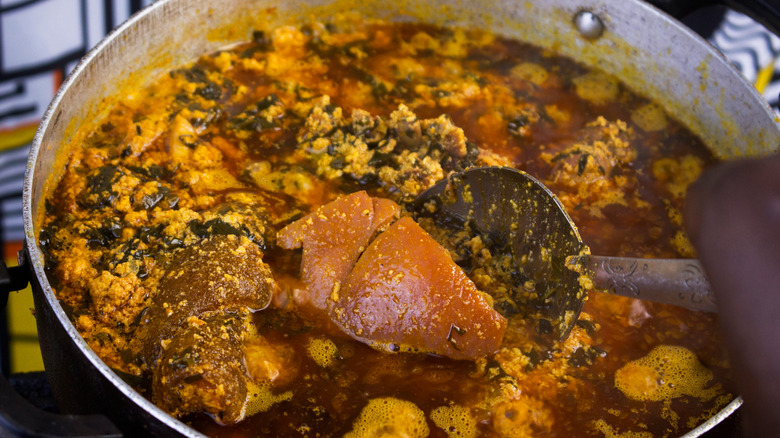Egusi Is The Hearty Nigerian Soup You Should Know
With soup season upon us, it's the perfect time to indulge in some comforting and hearty eats. Whatever your go-to fall soup is, from a simple and classic chicken noodle to a hearty minestrone, it might be worth putting them on the back burner for now. Egusi is the autumnal meal of dreams, and it's definitely worth making as the temperature continues dropping.
For many Nigerians, this soup is a staple dish, whether it's prepared at home or picked up on the go from street vendors. Serious Eats notes this soup is both creamy and nutty, making it perfect for enjoying alongside rice or fufu. The soup gets its unique flavor from the egusi, or agushi, seed, which is common in West Africa. Egunsi Foods note that these seeds come from the Egusi gourd. While the gourd's fruit is not edible, they're still cultivated for these seeds, which can add creaminess to dishes.
With many variations of this dish, there are plenty of versions to choose from based on your palette's preferences.
Variations of egusi soup
Egusi soup is very popular all across Western Africa. Because of this, many different variations have been created and adopted by different countries and regions around Western Africa's diverse landscape. For example, in Ghana, the well-liked dish goes by the similar name, agushi. According to 196 Flavors, the Ghanaian palaver sauce used in this dish's variation is very similar to Nigeria's classic egusi recipe. However, cocoyam leaves are used as the greens in the soup, rather than waterleaf or spinach.
Some other versions, like the egusi ijebu from the Southwest part of Nigeria, completely omit the greens (via Serious Eats). In this rendition, the soup also requires toasted ground egusi seeds and adds in tomatoes, which differs from the North's take on the soup.
As the outlet notes, there are myriad different proteins, seasonings, and greens that can be used in egusi soups; it's up to the soup-maker to determine personal and regional preferences.
Ingredients in egusi soup
As mentioned previously, the soup's ingredients can vary quite a bit. However, one of the common denominators, of course, is the egusi seeds. They come from the gourd with the same name, which is often compared to a small watermelon. According to Serious Eats, once the seeds are harvested from the fruit, they are dried in the hot sun until their shells become yellow. The site notes that they are often toasted and eaten as-is or ground up for culinary purposes. In this soup, they act as a thickening agent.
A protein source usually comes in the form of goat, beef, or fish, according to Demand Africa. There's also a long list of vegetables and greens that frequently make an appearance. Serious Eats lists pumpkin leaves, amaranth greens, kale, waterleaf, or spinach, as possible options to be stirred in at the end of the cooking process.
How egusi soup is made
Egusi soup is relatively easy to make and can be broken down into three parts: the stock, the paste, and the soup itself. Nigerian stock most commonly utilizes chicken, beef, or fish, which often simmers alongside garlic, ginger, red onion, and Nigerian curry powder.
Once the stock is ready, the egusi paste has to be blended together. To make this, Serious Eats suggests using:
- 2 cups of ground egusi seeds
- 1 medium red onion, chopped
- 1/4 cup of water
Then, combine these together to form a smooth paste, adding the water one spoonful at a time. Roll the paste into balls and add them to the stock, allowing it to thicken. Once you have it to your desired thickness, add the greens of your choice to wilt, per Demand Africa. Finally, the soup will be ready and can be served with a filling starch, such as fufu, which is made from taro, or jollof rice.



